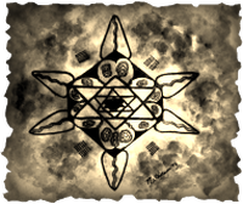
Shamanism is the most ancient spiritual practice known to humankind. Many anthropologists believe that the practice dates back over 100,000 years. The word “shaman” comes from the Tungus tribe in Siberia and it means spiritual healer or one who sees in the dark. Shamanism has been practiced in Siberia, Asia, Europe, Africa, Australia, Greenland, and native North and South America.
Just as in ancient times, contemporary people consult with modern day shamanic practitioners for practical and pragmatic solutions to problems in everyday life - from personal illness, professional challenges, or family discord to ancestral issues.
Shamans work in voluntary, ecstatic trance states, which alter their consciousness to travel to the realms of the invisible worlds, also known as Shamanic Journeying. Their ability to gain information and make changes in the invisible realms is dependent upon the working relationships they develop with spirits there. In this sense, shamanism is a relationship-based practice of making changes in invisible realms to impact healing, of individuals or communities, in the realm of ordinary reality.
For some peoples, such shamanic practice is part of their dominant culture, for others it is directly contradictory. Some individuals are intuitively guided to seek help from a contemporary shaman, often when other options have been exhausted, without even understanding what a shaman is or how they work.
A shaman is a man or woman who uses the ability to see “with the strong eye” or “with the heart” to travel into hidden realms. The shaman interacts directly with helping spirits to address the spiritual aspect of illness and perform soul retrievals, retrieve lost power, as well as remove spiritual blockages. The shaman also divines information for the community. Shamans have and still act as healers, doctors (witch-doctors), priests and priestesses, psychotherapists, mystics, and storytellers.
Shamanism teaches us that everything that exists is alive and has a spirit (animism). Shamans speak of a web of life that connects all of life and the spirit that lives in all things. Everything on earth is interconnected and any belief that we are separate from other life forms is purely an illusion. And it is the shaman’s role in the community to keep harmony and balance between humankind and the forces of nature.
Just as in ancient times, contemporary people consult with modern day shamanic practitioners for practical and pragmatic solutions to problems in everyday life - from personal illness, professional challenges, or family discord to ancestral issues.
Shamans work in voluntary, ecstatic trance states, which alter their consciousness to travel to the realms of the invisible worlds, also known as Shamanic Journeying. Their ability to gain information and make changes in the invisible realms is dependent upon the working relationships they develop with spirits there. In this sense, shamanism is a relationship-based practice of making changes in invisible realms to impact healing, of individuals or communities, in the realm of ordinary reality.
For some peoples, such shamanic practice is part of their dominant culture, for others it is directly contradictory. Some individuals are intuitively guided to seek help from a contemporary shaman, often when other options have been exhausted, without even understanding what a shaman is or how they work.
A shaman is a man or woman who uses the ability to see “with the strong eye” or “with the heart” to travel into hidden realms. The shaman interacts directly with helping spirits to address the spiritual aspect of illness and perform soul retrievals, retrieve lost power, as well as remove spiritual blockages. The shaman also divines information for the community. Shamans have and still act as healers, doctors (witch-doctors), priests and priestesses, psychotherapists, mystics, and storytellers.
Shamanism teaches us that everything that exists is alive and has a spirit (animism). Shamans speak of a web of life that connects all of life and the spirit that lives in all things. Everything on earth is interconnected and any belief that we are separate from other life forms is purely an illusion. And it is the shaman’s role in the community to keep harmony and balance between humankind and the forces of nature.
